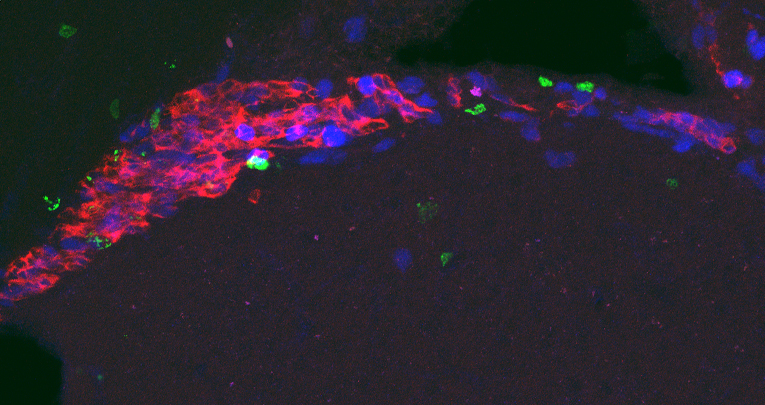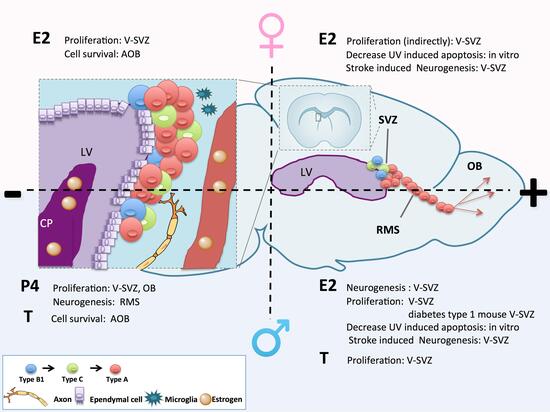
Frontiers in Endocrinology, 9 April 2018
Sex Steroids and Adult Neurogenesis in the Ventricular-Subventricular Zone
Giovanna Ponti 1,2 , Alice Farinetti 2,3 , Marilena Marraudino 2,3 GianCarlo Panzica 2,3 , Stefano Gotti 2,3
The forebrain ventricular-subventricular zone (V-SVZ) continuously generates new neurons throughout life. Neural stem cells (type B1 cells) along the lateral ventricle become activated, self-renew, and give rise to proliferating precursors which progress along the neurogenic lineage from intermediate progenitors (type C cells) to neuroblasts (type A cells). Neuroblasts proliferate and migrate into the olfactory bulb and differentiate into different interneuronal types. Multiple factors regulate each step of this process.
Newly generated olfactory bulb interneurons are an important relay station in the olfactory circuits, controlling social recognition, reproductive behavior, and parental care. Those behaviors are strongly sexually dimorphic and changes throughout life from puberty through aging and in the reproductive age during estrous cycle and gestation. Despite the key role of sex hormones in regulating those behaviors, their contribution in modulating adult neurogenesis in V-SVZ is underestimated.
Here, we compare the literature highlighting the sexual dimorphism and the differences across the physiological phases of the animal for the different cell types and steps through the neurogenic lineage.








